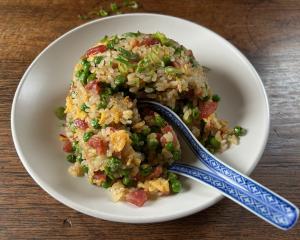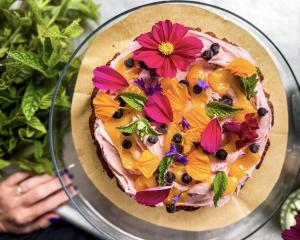Plotkin, a New York food, opera and music expert, tour leader and writer, shares the sensuality of the country as it is expressed through its wine, food and people.
It's a comprehensive region-by-region guide to Italian food and wine; not only what to eat but where and how to eat, markets to visit, regional specialties, cheeses, brief histories and influences, festivals and celebrations, and even a few recipes.
He aims to help the reader eat where locals, rather than tourists, eat and gives practical advice such as opening hours and contact details of recommended ristoranti, trattoria, cooking schools, bakeries and bars, whether they take credit cards (many don't) and an indication of price as well as the type of food they serve and some of their specialties.
There are also a few hints about major cultural and historical attractions, such as the Ducal Palace in Mantua or a Palladian villa in Veneto, and suggestions of towns to visit to see what places were like before they became cosmopolitan like the main tourist towns.
All Day Brunch: Simple meals for every day, by Lucia Logan (New Holland), has many savoury and sweet recipes for dishes from porridge, breakfast bars, breads, jams and smoothies to eggs any way you like and many more you probably haven't thought of.
There are large sections on omelettes, quiches and flans, frittatas, tarts and pies, souffles, crepes and pancakes of all persuasions and flavours.
Some, like orange chocolate tarts, are more dessert than breakfast, but then there are many pancakes with various sweet toppings and fillings.
If you are looking for ways to cook eggs or just enjoy eating brunch, this may be of interest.
The former New Zealand food writer and chef, now married to a Vietnamese man and living in Western Australia, has been bringing up her children gluten- and (almost) dairy-free, which is reflected in her recipes, as is her background growing up with hippie parents in Raglan, where they grew their own food.
There are numerous salad recipes, recipes for soups, stews, dips, drinks, ices and even some lush desserts, such as lemon honey and thyme curd shortbreads, or dark chocolate and rosemary chocolate.
There are several tempting everyday recipes such as spice-roasted vegetables with chickpeas, millet and chermoula or eggplant, tomato and feta salad with pomegranate dressing that I'll be trying.
Instead there are many noodle, dumpling, curry, pancake, rice, soup, deep-fried and stir-fried dishes available in eateries small and large.
Such comfort food acknowledges some Western influence since the Americans forced the Japanese to emerge from their self-imposed isolation and open to trade in 1853, according to Tadashi Ono and Harris Salat, authors of Japanese Soul Cooking: Ramen, tonkatsu, tempura and more from the streets and kitchens of Tokyo and beyond (Jacqui Small).
The New York authors, one a restaurateur and the other a chef, take a basic style of comfort food such as ramen or dumplings, tempura, donburi or udon and give basic recipes and many variations, some regional, on how to use each.
It is simple, homestyle or modest restaurant or street food, many of which can be easily made at home with a few specialist ingredients available from Asian groceries or good supermarkets.
Besides the main dishes, there are recipes for condiments such as dipping sauces, chilli oil, panko breadcrumbs, stocks, marinades and dressings.
There are lots of photographs, many of them explanatory, such as how to peel and devein a prawn or fold a dumpling.
The first was The Food, the Stories, the Sisterhood (2011), published to raise funds for charity.
The Sydney women come from different backgrounds: some have Hungarian or Polish heritage, some English or South African, and these traditions are evident in some of the recipes gleaned from grandmothers, mothers or aunts.
The recipes, collected from many friends, are an eclectic mix of traditional, such as cabbage rolls, Greek meatballs, latkes, gefilte fish or pletzlach (a dried apricot and almond sweet), and more trendy, such as Moroccan roast cauliflower salad, summer freekeh (smoked wheat) salad, glazed Asian duck or poached salmon salad with lemon dressing.
Unlike many fundraising cookbooks, this is stylishly designed and produced, with good colour photographs, a glossary and not one but two indexes, one by course and the main, exhaustive index.











